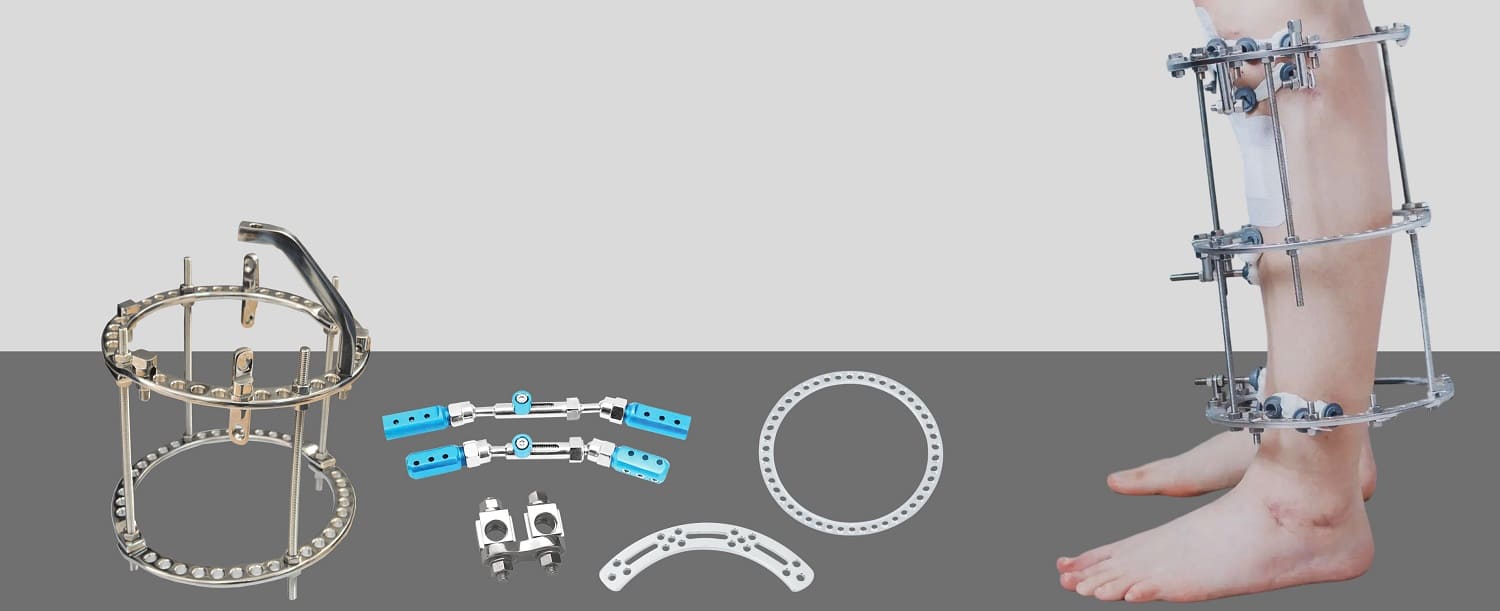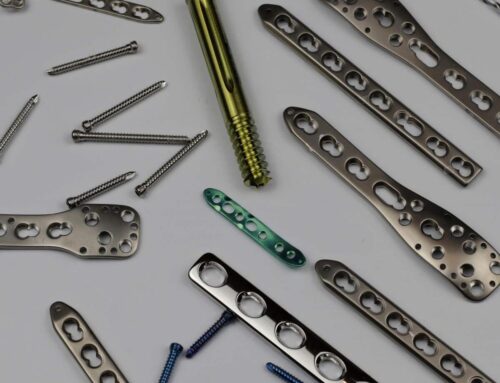External fixation is a medical procedure used to stabilize fractures or injuries to bones and soft tissues. Here’s what you need to know about it:
Purpose:
External fixation is employed to stabilize fractured bones, particularly in cases where internal fixation (such as plates or screws) isn’t feasible or appropriate. It can also be used to treat complex injuries involving soft tissues like tendons or ligaments.
Components:
The main components of external fixation include pins or wires inserted into the bone, connected to an external frame usually made of metal or carbon fiber. The frame holds the bone fragments in proper alignment, allowing for healing while minimizing movement.
Procedure:
The procedure typically involves inserting the pins or wires into the bone above and below the fracture site. These pins are then attached to the external frame, which is adjusted to achieve the desired alignment of the fractured bone. The frame is secured to the skin with pins or clamps.
Advantages:
External fixation offers several advantages, such as providing immediate stability to the fracture, allowing for early mobilization and rehabilitation, and facilitating access to soft tissues for wound care or surgical procedures.
Indications:
External fixation is commonly used in cases of open fractures (where the bone breaks through the skin), severe soft tissue injuries, fractures with extensive comminution (breakage into multiple pieces), or fractures with associated vascular injuries.
Complications:
While external fixation is generally safe, complications can occur, including pin tract infections, skin irritation or breakdown, nerve or blood vessel injury, and loss of fixation due to frame loosening or breakage.
Aftercare:
Patients with external fixation require close monitoring for signs of infection or other complications. They may also need physical therapy to regain strength and range of motion once the fracture has healed.
Removal:
External fixators are usually removed once the fracture has sufficiently healed, which can take several weeks to months depending on the severity of the injury. Removal is typically a minor outpatient procedure performed under local anesthesia.




Leave A Comment